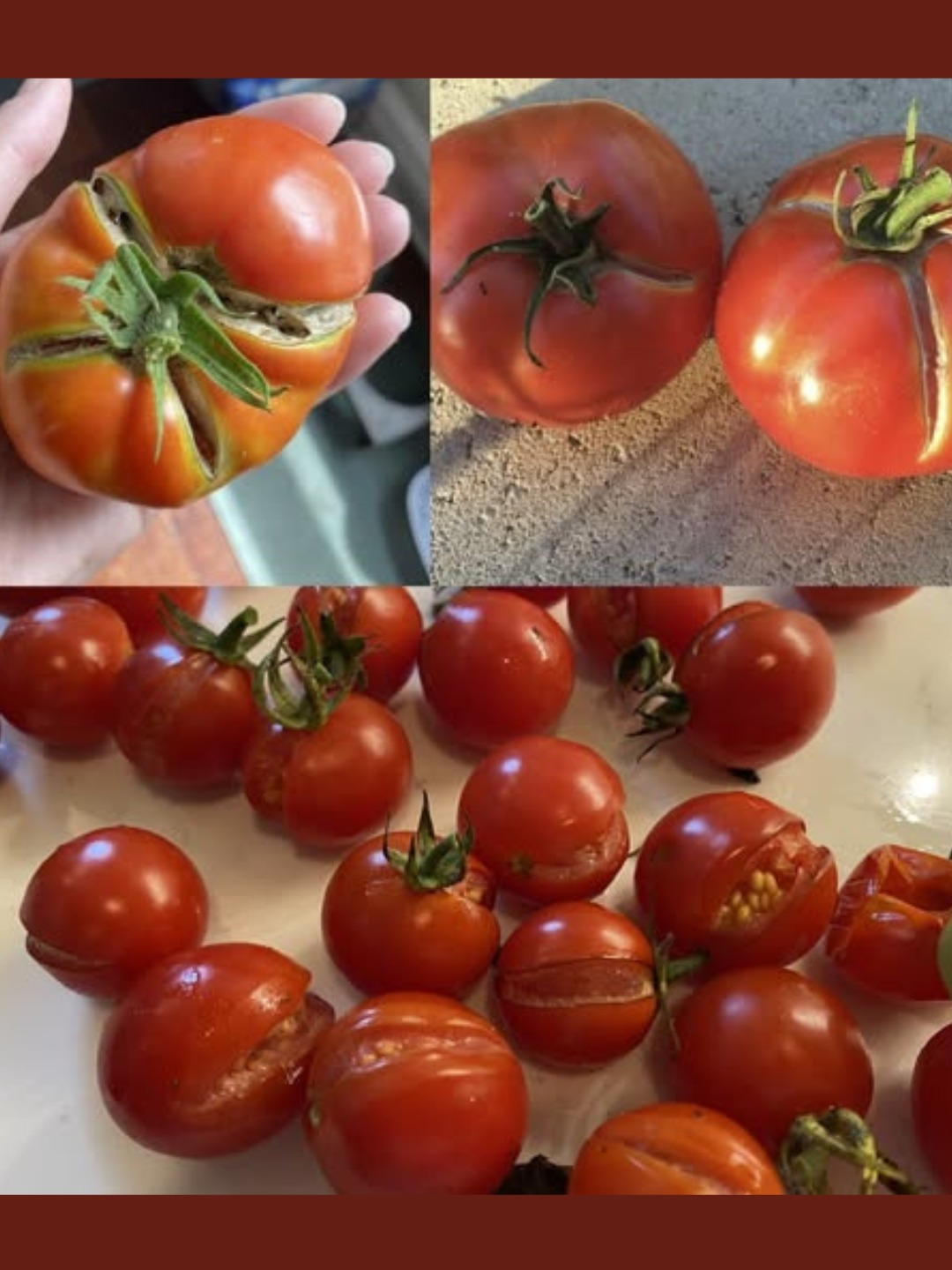If you’ve ever ventured into growing your own tomatoes, you’ve probably encountered the frustrating sight of cracked, split, or burst fruit just as it was reaching peak ripeness. Whether they’re cherry tomatoes or hefty beefsteaks, this issue can strike unexpectedly and leave you wondering what went wrong.
Let’s explore why tomatoes split, what it means for your plants, and most importantly — how to stop it from happening again.
🌿 The Real Reason Tomatoes Split
Tomatoes split primarily due to rapid changes in water availability, especially after a dry spell followed by heavy rain or aggressive watering.
Here’s how it happens:
-
During dry periods, tomato plants slow down their growth and water intake.
-
Suddenly, when there’s a surge of water (rain or irrigation), the plant drinks it up quickly.
-
This influx causes the inside of the tomato to expand faster than the skin can stretch, resulting in splits or cracks.
It’s similar to overfilling a balloon that’s already at its limit — something’s gotta give.
🌦️ Types of Tomato Splitting
-
Radial Cracks
-
Extend from the stem outward like spokes on a wheel.
-
Caused by a sudden influx of water after a dry spell.
-
-
Concentric Cracks
-
Form rings around the stem end.
-
Often occur as the fruit ripens and are more common in heirloom varieties.
-
Both types can affect appearance but don’t necessarily mean the tomato is ruined.
🍅 Are Split Tomatoes Safe to Eat?
Yes — in most cases, split tomatoes are perfectly safe to eat if consumed soon after harvesting. However, cracks make them vulnerable to:
-
Mold
-
Insects
-
Bacterial infections
If a tomato is split but not showing signs of rot or infestation, simply cut away the damaged area and enjoy the rest.
💧 How to Prevent Tomato Splitting

